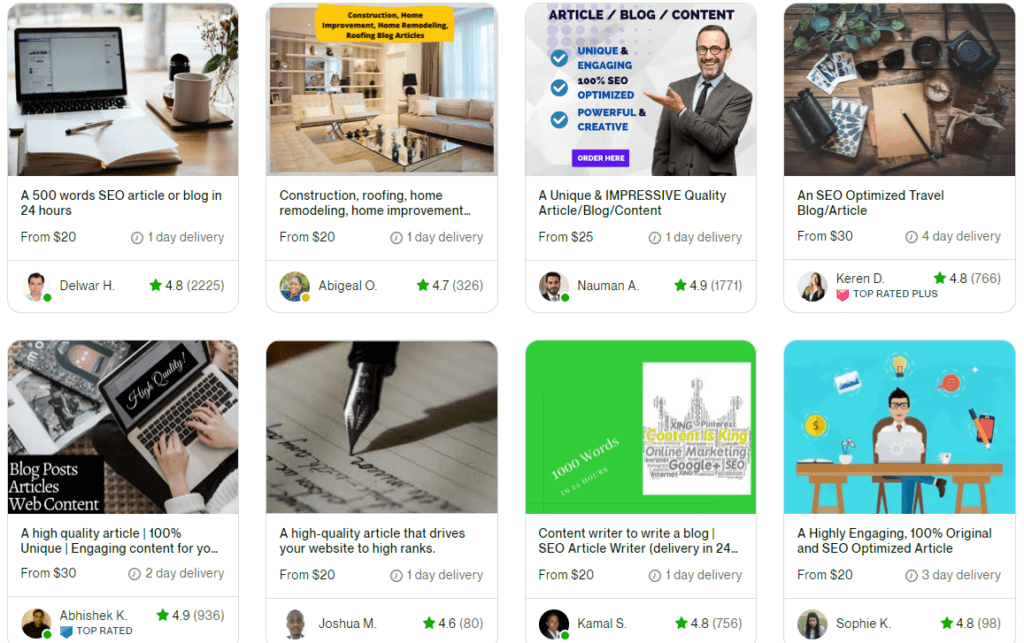Remote Workers: Challenges and Rewards
Remote Workers: Challenges and Rewards
It’s 2022 and with more and more businesses allowing work from home, both the challenges and rewards of remote workers have been made clear.
Many of us have a healthy fear of change, and new best practices in any industry are often slow to be adopted. Especially since the pandemic, there’s been a real uptick in remote working, but it’s still something many shy away from. This is despite the fact that studies, polls, surveys, etc report increased efficiency, work performance, profits, etc.
There’s clearly much to be gained from remote workers, but there are a couple of challenges too. We’ll cover the most prominent issues in this article, hopefully helping you get a clearer image of how a remote business set-up can work for you and what you stand to gain.
Things to Consider Before Going Remote

A business can be run remotely or from home permanently, and the decision and subsequent success have little relation to time elapsed. Rather, there are two major considerations to be made.
Firstly, you must look with a critical but unbiased eye at your own strengths, weaknesses, and character. It takes a particular type of person to be self-motivated enough to keep going no matter what. The loneliness, pressure, and repeated failures of business can lead to depression or mental health issues. I’d even go so far as to say that you need to be a bit maniacal and obsessed with your project. These are qualities you need as a business owner even if you’re not remote, but with the added potential for distraction and isolation, they become even more critical.
Secondly, is the business itself definitely suited to being run without an official office, studio or warehouse? Many businesses would simply find a remote set-up impossible and never allow staff working from home, let alone not having a central physical hub. Can’t see it happening anytime soon with a café, for example.
But apart from the exceedingly obvious such as in the case of eateries, some obstacles in this situation could be legal impediments (e.g. health and safety), an element of physical work (e.g. checking stock) needing to be done, or credibility with clients or customers.
For some businesses, a solution may be found by creating standard operating procedures (SOPs) to be created and having them be followed by remote subcontractors. For example, if you sell products online, could they be manufactured, warehoused and fulfilled by a third party?
Everyone considering the remote path needs to think objectively about these things. If their personality, character, or business isn’t suitable, they’ll be in for a harrowing lesson.
Rewards of Remote Workers in a Small Business
Lower Overheads (Higher Profits!)

If you’re a small business that works on tight margins, paying the steep lease prices on city-centre or business-park offices, or even warehouse spaces, can make the difference between generating profit or accumulating losses.
Even if you have more of a budget to play with and can easily afford moving into somewhere swanky, at the end of the day, money saved is money saved. The cash spent not only on rent but all of the other costs that go into running a business space such as heating, electricity, equipment, consumable amenities, etc, can seriously add up.
A remote team means that that money can be spent on more worthwhile things, such as better software that might make the work process more efficient, marketing, or better yet, bonuses for employees to keep them motivated and attract top talent.
Increased Flexibility
By having a remote business, you can enjoy more flexibility and agility in the way you run, which means higher resiliency in the face of problems, and being able to budget more carefully.
Without having to fill certain office roles such as cleaners, you have more control over hiring and can expand or contract on a person-by-person basis. Whatever job you need to hire for, you can now consider candidates from anywhere, including those from countries with lower expected wages, cutting costs further.
Optimized Business Environment
When fully remote, a business can adopt a more dynamic culture where every practice can be analyzed and optimized. If we don’t need a centralized office, what else don’t we need? Where’s the waste in the workflow? Where are the missed opportunities? Every team member can start to focus on what’s truly essential to drive the business forward and discard the relics of tradition.
Furthermore, in most physical offices, a lot of time slips through the cracks in a general workday. People idly chatting to each other, getting distracted by what coworkers are up to, maintaining communal spaces, arriving a bit late because of traffic, etc. For the most part, these cease to be issues with remote working, so you ‘optimize’ the hourly wage you pay in that regard too.
Happier Employees

For a long time now, it’s been the dream of many to be able to work from home and earn a living without having to step out of their front door. And why not? The home environment is not only more comfortable and familiar, but means avoiding the daily hell of getting stuck in traffic, wasting time and money on public transport, being cornered off in a grim office cubicle, and facing odious bosses and co-workers.
Offering remote work often means that you’ll have more content employees and, in all likelihood, attract a far higher standard of talent. Remote positions are hot property due to all of the quality-of-life benefits they offer!
Better Teams
Most people need the structure and discipline of an office, and they get into a flow state while interacting with others. The office suits alpha types, who enjoy leading and controlling, and betas who need to be led and controlled.
A third personality type which is often overlooked (alphas usually get all the limelight) is called gamma; they don’t like to rule or be ruled! They excel if left to do their own thing and get into a flow state where they can make magic happen. Imagine the mad scientist down in his lab, or the eccentric author that goes to write on their own in the forest – these people work wonders and would not do so in an office.
The main pro of running a virtual office is pulling a team of brilliant people who will do better work for you than they would in an office and require less managing to boot. You also open up access to new groups of people from over the world and potentially superb candidates such as those with mobility issues who would not be able to get to an office otherwise.
The main con is that your business might fall apart if you mistakenly employ the wrong people, but that’s true of traditional workers too!
Challenges of Working with Remote Employees

I’ve worked remotely for nearly a decade as a freelancer and now as a small business owner. Every choice in life involves a compromise; very few things are ‘all good’, especially concerning work.
Overall, the negatives of remote work (bouts of loneliness, overwork, neurosis, etcetera) as preferable compared to the alternatives. Office work can often mean lengthy commutes, energy-sucking politics, and working directly with sociopaths and bullies.
Working remotely, it often feels that opposing challenges can be solved because we’re ultimately in charge of our day and workflow. In an office, unless you’re at the top of the pecking order, you have to suffer the negatives perpetually. That element of personal control and empowerment is the real differentiator.
Schedule Management
We all have routines and best practices that we follow in the office, but some of them don’t translate so well to remote work. One example is the 9-5 workday, which actually suits relatively few people. We tend to find that we’re either morning or evening people, and there’s some interesting studies showing that genetics back that up.
I struggle with sharpness in the morning, regardless of how early I’ve gone to bed or how well I’ve slept, so I end up doing some of my best work in the late evening. Equally, I know people that prefer to get up at dawn and get a couple of hours of high-level creative work done before breakfast.
With remote work, cultural norms can be examined and adjusted. This applies not only to work hours and breaks, but also clothing and snacks. Workers can fine-tune their work processes to enable more peak mental flow states and better efficiency.
Communicating with Remote Employees

Using remote employees can offer tremendous rewards for small businesses as already mentioned, but you can quickly cut into your potential savings and increased efficiency through miscommunication.
In a worst-case scenario, the time it takes to re-explain and re-do incorrect work makes the task more expensive than having had a specialized freelancer do it. Delays and mistakes can even lead to lost clients.
It’s good practice to always work on the assumption that there is a high chance of misunderstanding. With this in mind, you can get in front of the problem before it occurs.
Create a standard operating procedure and document for every task that is likely to be carried out more than once in the future. Do this before allocating labour to the remote employee. You can then verbally go over the task through Zoom or similar and send the instructions over after.
These documents should be stored safely so that, over time, every routine operation procedure gets documented. That will pay dividends when hiring new staff (external or remote) as well.
Time Management

One of the biggest challenges in working remotely is in managing time. In an office, we know when we should be working, when break time happens, and when we finish. Bosses know if people are working because they can see them. We rarely audit how long individual tasks take. One person might be twice as productive as someone else on the same day, but managers might not know.
When working remotely, things are a bit more opaque. Start, finish and break times blur, and leaders can’t see what’s happening. To avoid awkward accusations or unnecessary productivity-anxiety, allocate times for everyday tasks and schedule them. Doubt and fear will be reduced if the schedule is agreed upon and broken down.
Managing Remote Teams: Complete Guide
Managing Remote Teams
There has been an explosion in the use of outsourced and remote workers over the past few years, a shift helped in no small part by the pandemic as thousands of companies were pushed into managing remote teams to be safe and meet government regulations.
This shift in work set-up comes with huge potential benefits, but there are some pitfalls to be aware of too. Advantages include things like far lower overheads and thus higher profits, but if badly managed, performance can suffer and clients may be lost.
While most of the perceived problems around remote working are paper tigers or have little basis in reality, there are some things to be aware of. In this article, we’ll cover why remote working is so great, and some of the dos and don’ts to follow when it comes to managing remote teams.
Successfully Managing a Remote Team

There are three major fundamentals to focus on run a remote team successfully.
Communication
Firstly, there needs to be a shared communication channel. Basecamp, Slack, Google for business, it doesn’t matter too much what you use, the main thing is that everyone is on it and appropriate team channels are set up so relevant people can see relevant information.
By relying on older methods like email or fracturing people across different programs, omissions in communication and misunderstandings will continuously occur.
As an addendum, never assume anything about the people you’re dealing with, and make communications as easy as possible. Just because someone has a glowing resume or many years in a role, it doesn’t mean that they’ve entirely understood you or that they have the same way of solving the problem. It’s common for a team member to spend days or even weeks going in the wrong direction.
On video calls and text exchanges, keep asking people to repeat their interpretation of the current mission and how they intend to move forward. Explain that the reasoning behind this is to ensuring that everyone is on the same page, not that you don’t trust them.
Documentation
Secondly, set up standard operating procedures, write documentation, and record help videos – that way you only need to explain things once.
This library can be updated and improved over time as the business evolves. For the most part, once each process is polished, even taking on new staff shouldn’t result in much extra downtime for the extant team because the fresh hire can just be directed towards the documentation and guides to get to grips with themselves.
Choose Well
Thirdly, and most importantly, find remote workers that are intuitive and highly self-motivated. Regardless of the position you’re trying to fill, for any role, self-motivation is one attribute to look for above all others.
Having to remotely micromanage people would mean that you could never get your work done. You need team members to do their tasks better than you could, and whether they work in a coworking space, café, or their mother’s basement, without a high level of internal drive and discipline, they’ll fail.
In this new age of remote working and personal freedom, many people dream of working remotely, but only a small minority have the mettle to really thrive with it.
What to Look For in a Remote Employee

For the most part, the things that make a good remote employee are not too different from what makes a good employee in general, but there are some traits which you’ll want to place particular attention on when you’re considering taking on a new remote worker or considering whether your current team will be up to it.
You need people who are particularly self-motivated and driven, people who can be relied upon to complete tasks regardless of whether someone is monitoring them. In other words, they need to be self-starters who are comfortable working more independently and won’t need micromanaging.
You also need to take their personal preferences and psychology into account to some extent – there may be people who you could trust to work alone and still do a good job, but if they actually really dislike working this way and miss the more social atmosphere of a typical in-person role, chances are that they’ll burn out quickly or performance will suffer regardless of their talents.
Ideal remote workers are hard to find and typically either have an entrepreneurial mindset or a self-employed one. Worker bees who just want to be told what to do tend to disappear, leaving you only with initiative-takers and self-employed types who are comfortable with more independence and will make managing a remote team easy.
Securing Your Valuable Remote Workers

The potential problem with the kind of entrepreneurial people mentioned above is that they will often outgrow their position in your business and possibly even set up their own gig in competition with yours.
To tackle this problem before it arises, you need to provide a leadership path for them within your company. Develop a clear roadmap of rewards, goals, and timescales, even if they don’t ask.
If you’ve identified someone really worth holding onto and want to induce stellar results, then future directorships, shareholding, and profit shares should also be on the table.
The self-employed and seasoned-freelancer types need to be paid well right now, or you’ll find they get poached and will happily bolt to receive their proper market rate elsewhere.
It’s worth making any diamond-in-the-rough you find the exact same offer you would to a strong entrepreneurial type since you can’t be exactly sure of people’s mindsets, and you want to foster loyalty with incentives as soon as you can.
Wait too long, and unbeknownst to you, they’ll be applying for other jobs and/or only performing at a fraction of their potential since they see no point in putting in more effort than necessary.
Onboarding and Training Remote Employees

Just like with in-person jobs, the onboarding and training that needs to be delivered to a worker in a remote team depends on their job type.
Roles are commonly categorized as either systems/process-driven or creative/skilled. Bringing on a new employee into one of these two groups will require a different approach to the other.
People who are doing systemic or operational work generally need to follow finely-tuned manuals and standard operating procedures.
For example, an existing staff member may need to do each task, map it out, and see how long each measurable unit takes. A new person will then be able to get all of the recorded information immediately, and they can review and absorb this at their own pace. You’ll be able to see if they’re performing just by looking at the numbers over time and seeing whether mistakes are being made.
For more creative jobs, the chances of you being able to bring on someone with no experience but the right attitude and training them from scratch are slim.
It’s always going to be less of a gamble to find someone with a demonstrable track record. You know what you’re looking for, they know what you need, and they’re able to hit the ground running.
That’s not to say that training people is impossible though – far from it. In fact, even if you get a real expert, it’s likely that they’ll need some level of training to get acquainted with the particular procedures and tools your company uses which they may not have encountered before.
Live Training
Remotely training people can be done in a ‘hands-on’ way by setting up a video call and mutually screen-sharing to show and explain what’s being done on screen. This is just as good as sitting next to each-other in an office and pointing to your screens as you explain.
Creating Your Own Training Resources
And again, just like in an office where people might be given print-outs, you can easily create PDF guides with screenshots and numbered guides to explain how to use software or company systems, documentation on following company policy, etc.
Create a folder with notes, instructions, drafts, and, ideally, a standard operating procedure for anything likely to be done more than once in the future. The most vital or complicated tasks will need a more detailed folder. Videos, flowcharts, and step-by-step instructions will make life far more comfortable in the future.
You’ll realise how valuable this library of resources is when you find yourself giving a new team member the same job after the last one has left the organisation. Sometimes, you’ll save yourself having to go over everything again with the same person!
Online Courses
External online course providers are also another great option for the continuous professional development of a remote team. There are loads of options out there covering all sorts of topics, from health and safety to programming. Many are officially accredited and will provide your workers with expert guidance at no time cost to you.
How to Evaluate Your Remote Workers’ Performance

Keep good records of standard operating procedures (SOP) and the time it takes to complete each task. If the task is something you yourself can do first, you can time yourself as you create the SOP. Depending on the task, a specialist could complete it in more or less time, but at least you can have a bare minimum benchmark.
For the most part, a specialist should work faster, but there are times when their specialist knowledge or creative process means that they actually need longer but the end result is much better, so take results into account and adjust expectations over time.
Everyone works in their own way, and one of the biggest benefits that remote workers themselves appreciate is more freedom to get their heads down and do things in a more focused style that suits them best, so try not to be equivalent of a bridezilla control freak when it comes to managing your remote team.
Remember that really all that matters is if they can give you the results you need in a given timeframe. This is what you measure success by – not how often they’re wiggling their mouse or how many keystrokes they’re clocking between 9:00 and 17:00.
Raising Engagement When Managing Remote Teams

Having operated entirely remotely for over five years, we at Out of the Box Innovations have learnt a thing or two about the process and are afraid to tell you that ideal remote workers are born, not made, so there’s no easy blanket method for keeping people engaged.
Again, not to sound like a broken record here, but you need people who can motivate and manage themselves – the kind of person who would rate high on conscientiousness if you put them through a Big Five test (which isn’t a terrible idea for a new hire, just saying!).
Let’s think about an office environment:
Some staff seem to need constant policing; others benefit from less authoritative and more hands-off coaching. A third group is highly self-motivated, and any attempts to influence their mindset can actually spoil their work ethic and performance.
Typical offices will have a mixture of the three, and the ratios vary by department, company, and industry. People can also be any one of these three types of workers at different points in their careers and depending on their company environment.
The key to remote working is finding people that are already self-motivated. The only help these people need is for you to empower them to focus on their work without nannying, coercion, or manipulation. It’s better to spend a bit longer on the hiring process finding an exact match candidate rather than expending effort on creating engagement later on.
But How Can You Motivate The Right Person More?

During crises like the pandemic, fears that people won’t be working properly and pulling their weight will come to the fore, and you may be trying to think of alternatives to micromanagement or cutting costs through shuffling your payment structure.
When it comes to motivating people, direct financial rewards have a limited effect and can make your work relationships feel transactional. A better option when managing remote teams is to look at making small gestures and offering assistance which shows you care about their well-being.
As often as possible without becoming obnoxious, reach out to check that your employees are okay and if they have any questions or concerns, and know that giving the occasional unexpected reward or gesture of gratitude can go a long way.
It can be harder to pull off in an effective way with people you’re not in the same room with and may have never even met, but these actions encourage a deeper human bond and feeling of kinship.
This works as an emotional carrot and stick rather than being a purely financial or authoritative one; if a remote worker feels genuine friendly feelings and appreciation from you, they’ll feel much more motivated to produce good results for you, and guilty if they don’t meet your expectations.
Managing Remote Teams: Tracking Work Time

Rather than having employees check in multiple times a day and justify themselves (or using screen-sharing apps that can be somewhat invasive at best, straight-up spying at worst), both manager and worker can agree on how long a set of tasks should take. That makes it simple to map out a week. A trusted staff member, or manager, can do each job once and time themselves. (They can even record themselves to produce a standard operating procedure video).
This way, if an employee has a 12-hour day one day and then decides to take half a day the next, it doesn’t matter. If they want to stay in bed until lunch and then work through the night, it’s okay. Keep in mind when managing remote teams that everyone has their own productivity hacks and works best at different times. By “setting and forgetting” like this, no one will be hampered by worrying about micromanaging or having to look like they’re doing enough.
While it might be hard for employees to stay self-motivated at home, a manager of a remote team who chooses not to spy will struggle to understand if their people are indeed putting in the agreed time, effort, and focus.
Some workers will overwork as they feel they’re not getting enough done. Due to the high risk of burnout, this becomes self-fulfilling as they grow fatigued and take 12 hours to do what could really be done in 8. This can also be driven by being micromanaged remotely, where manager’s messages and nudging can be more stress-inducing, as messages lack tone and body language and can thus be mistakenly interpreted as more harsh, impatient, etc than they actually are.
How about Managing Yourself?

Managing a remote team is important, but you need to make sure that you can manage yourself and your own time just as well!
Experiencing remote work and learning what works and what doesn’t for yourself also gives you more insight into the process and a better understanding of the problems your employees may be facing.
To really put together an ideal workflow when starting to work remotely, it pays to test all office-based rules and see whether they’re optimal for you. Write down every rule, custom, and convention that occurs to you and seems feasible, and then set about experimenting with them.
For example, do you feel more professional and work-focused if you continue to wear a suit or some other “work” uniform? If so, carry on. Are you a 9-5 person? Most people aren’t – perhaps now’s the term to set a new schedule which covers your peak alert hours and see how your efficiency changes.
Experiment and optimise every aspect of your workday. Do you find that long 10-hour days with a full 3-day break offers maximum productivity? If so, then a four-day workweek could be excellent for your quality of life and work performance.
When managing remote teams, you can experiment with these sorts of factors for yourself, and then discuss the findings with your team to see if they’d like to make similar changes to you too.

Flexibility – The Biggest Benefit of Advertising Online in 2022
Flexibility – The Biggest Benefit of Advertising Online in 2022
Over the past decade, advertising has experienced a real renaissance. In the early days of the internet (otherwise known as the noughties), traditional advertising methods such as those used on screen, billboards, and in print were replicated online through banners, long-form sales pages, and flyers.
But as technology and culture evolved, those traditional strategies went from being simply recreated online to being completely overhauled. The potential for more creativity and flexibility rolled around at the same time as mini tribes (online communities) and personality cults (influencers) gained power, leading to much more power in online advertising’s ability to influence people.
So, what exactly are the advertising strategies that have accompanied the progression of web 2.0 into web 3.0 and which you can use in your own business? Let’s take a look.
Content Marketing

One of the most effective online marketing strategies is content marketing, which can direct substantial social media and search engine traffic to your business website over time.
Newspapers always had advertorials, but these were obvious advertisements that no one had any illusions about. Who could have predicted that some of the most powerful adverts would one day comprise pages of text in which there was nothing obviously for sale? What’s “for sale” and being advertised through content marketing is knowledge, experience, integrity, and sometimes even frivolous shock value or pranks.
Content marketing is one of the best ways that we can get attention in crowded spaces. Users that are completely desensitized to more obvious ads (AKA ‘ad-blind’) can still be lured into reading an entertaining post or watching a compelling video.
There are two main difficulties that people come up against when trying to achieve an effective content campaign:
1) Most successful business-minded people are not lucky enough to also be blessed with great writing or graphic design skills. Creating original, professional content is hard even for specialists, let alone dab-hands.
2) Anyone you employ to create content on your behalf is unlikely to have genuine in-depth knowledge about your industry. Readers who do have such knowledge tend to grasp right away when the author of what they’re reading doesn’t know what they’re talking about.
Repurposing Content

A strategy very much related to content marketing is repurposing content, i.e. finding things you’ve made that have never been published online before and getting it into a publishable condition. Whenever you write, film, or record something – a report, PowerPoint, or some guidance notes, for example – think about how it could be transformed into valuable content to be published to your site.
If you’re still struggling to come up with material, an extremely effective method that you might not have considered is going over email exchanges, Microsoft Teams or Skype conversations, or anywhere else where you’ve been explaining things or solving problems over text.
You can then cut and paste these types of conversations into a draft folder, but be careful to omit any identifiable details or sensitive business information, trade secrets, and so on. What you’ll hopefully be left with is a plenty of good material that just needs a thorough edit to get into publishable condition.
Sitting down with a blank screen or a sheet of paper is a recipe for writer’s block, especially for a non-writer, so this repurposed content can work as a life-saving foundation for easily creating highly authentic material that’s completely relevant to your business space.
Using Influencers (or Becoming One!)

Influencers have had a huge effect on the marketing world and now play an enormous part in reaching audiences, particularly younger ones. You no longer need to fork out ridiculous sums for celebrity endorsements – you can get YouTubers, Instagrammers, and podcasters to tout your product for a fraction of the cost and in a much more authentic, relatable way.
Influencers typically attain their positions through skill/achievement (e.g., titans of industry), genetic luck (e.g. Instagram models), happenstance (unexpectedly going viral), or some combination of the three.
Making a realistic plan for becoming an internet influencer is easier said than done – after all, there are legions of teens and young adults hoping to be the next YouTube Star or Instagram celebrity, and they’re not all making it – but there are steps you can take to increase your chances.
For example, you need to follow the principles of good marketing. Adapt what you know about marketing products and services to marketing yourself. Find a niche, offer something unique and intriguing, and get on the radar of your chosen audience.
You can even try living in the twilight zone between being a zealot, insane, or just obsessed. Act like a televangelist or eccentric billionaire, and people will be polarized and interested if nothing else.
You’ll need to pick a space where you can not only sustain your own interest, but incite a cult-like commitment from your followers. The only downside is that you are what you do – so be careful lest you really turn into your eccentric online persona (a trap that some prominent influencers seem not to have avoided!).
The Importance of Creativity to Marketers

When writing your resume, including examples of game-changing insights and the results you’ve gotten throughout your career is a sure-fire way to impress employers. Practical, concrete case study highlights will excite those in charge of hiring because they’ll be hoping that you can repeat the feat and do the same for them.
The most valuable skill that a marketer can nurture is developing insight and sparking creativity within themselves to suit different situations. These skills aren’t really teachable, and you’ll never see a course for them on a college timetable.
Before too long, chatbots, machine learning, and AI will begin to dominate the marketing industry and swallow up a lot of advertising tasks. We’ll be able to upload every clickable headline, call to action and close, and let machines split test with an efficiency and accuracy that no human could ever hope to achieve.
However, one of the most far-off developments for AI is true creativity and the ability to do artistic work. In the meanwhile, flashes of market-crushing inspiration come to human marketers that persistently exercise their creative muscles, and this has always been absolutely critical to the most successful marketing campaigns and viral hits. It was the most vital skill back in the days of Mad Men, and that’ll probably continue until we reach true spontaneous sentient AI (if ever!), so nurture that creative streak and never stop trying to think out of the box.
Broaden Your Focus

There’s a tendency for those in business to be industry-centric and focus only on events that are directly relevant to their customers and competitors. For example, an SEO firm will generally follow the top SEO blogs and go to SEO events and just leave it at that. This, of course, applies to all industries, not just marketing.
The problem is that such a narrow approach means that people only find out about hot ideas after they’ve already lost some or much of their novelty, having trickled down the grapevine and been held in store for that next scheduled event or blog post. By this time, they may already have lost a lot of their effectiveness.
Innovation tends to occur when new ideas and principles are introduced to an industrial ecosystem. Historically, these ideas often came from other countries, but nowadays, they’re more likely to be lifted from other industries because of the internet.
So, one of the best things you can do to get marketing advice is listen to podcasts covering multiple industries. Podcasts can be created and uploaded in a day, meaning you can get high-quality content while it’s still fresh. This is unlike reading marketing books from ‘gurus’, which can take six months to a year to be published. You can also listen to podcasts while travelling, exercising, or doing chores, and it’s less straining on the eyes.
A highly recommended podcast in which you can hear what the fastest growing companies are doing is This Week in Startups (TWIST) by Jason Calacanis. There, you’ll hear brand new information from entrepreneurs who work with some of the very best new companies. They share marketing ‘secrets’ because they are more focused on their products and are thus not so guarded about their marketing tactics.
Rub Shoulders with Bigger Fish

One more tip on how companies can better market themselves is through a better mindset. Most industries are crowded with players, but the leaders always command a disproportionately huge slice of the market. Getting noticed can be immensely difficult for companies that aren’t in the top three. Unless you have done something seriously innovative, then you may find it hard to be heard through the noise of other marketing messages.
Everyone in our field should ask themselves, “how can we mingle with the market leaders?” For example, if you want to blog about entrepreneurship, don’t just post on your own blog. Try to get your best articles submitted on a relevant site like entrepreneur.com. I was a co-founder of a recruitment company, and I’ve been mentioned on recruiter.com a couple of times. This is much better marketing than publishing on my own blog.
The same applies to industry forums, conferences, and events. Try to mingle with the biggest audiences in your industry and be front-and-center stage rather than just beating your own drum in a back alley.
One Channel at a Time

Marketers generally focus on doing content for their own websites and the websites of clients. All forms of marketing tend to be very time-consuming (at least when done well), and without focus, there can be a struggle to get overall traction.
The key is recognizing when it’s time to draw a line in the sand on a task or project and move on to the next thing. If you’ve got plenty of new top-10 search engine ranking positions under your belt thanks to your SEO efforts, it’s probably time to stop and start thinking about actual conversions. Sometimes it’s clear that Google and Bing have a preference for certain websites that you’ll have trouble beating, in which case your time could be better spent going after new keywords rather than straining to nudge the existing ones slightly higher.
You always need to keep in mind where your focus can best be directed for the highest ‘ROI’ on your time. This means getting page views, but most importantly: leads and sales.
Value Your Time

If marketing, or one of the skills relevant to it such as writing or website creation, happens to be your passion, that’s great! But it also means that you can end up putting too much time into certain favored tasks and neglecting others.
No matter your job title, there are going to be parts of a job that you like to do (or at least hate less than the rest!) and other things that you’d rather put off, but at the end of the day, it’s all got to be done.
Especially if you’re a business owner or working in a small company, you generally have to wear many hats and handle multiple workflows that go into making a business successful.
Since you presumably don’t want to be spending every waking hour working and not getting anywhere fast, you need to be on top of time management for yourself and any other workers you manage.
Know the value of your own time and consider outsourcing things where you can, or pay an upfront cost for tools (software or hardware) that’ll ultimately save you time and money in the long run.
Writing and content creation for corporate blogs, for example, is a commodity service that often works out to be worth much less than it costs to create when considering the time spent having a business owner write it.
Perhaps if you tend to write for your own blog, outsource content a few times this year. When I started to do this more, clients didn’t complain or even notice because I made sure that the quality was still there. Delegation is the single best thing that an owner, executive, or manager can do to take control of their business – not to mention their life.
Accept that the Masses Prefer ‘Digital Junk Food’

Clickbait headlines, titillating images, embarrassing gossip, and copywriting that reads like a snake oil pitch… These are forms of marketing and advertising that are to your brain what junk food is to your belly.
Junk food is quick, fast, manipulates our instincts, erodes our health, and is clearly not what’s best for us, but it’s what plenty of people continue to choose day in, day out.
Unfortunately, the same lack of taste applies online, where the most popular content tends to be highly consumable and have no substance – nutritional or otherwise!
If you’re a digital marketer who cares about the craft of writing, it can be a bitter pill to swallow when you realize that thoughtful, quality content is typically not going to be the road to success.
You can do your best to create quality content that helps people and provides value, but most of the time you’re forced to do it within the confines of simple, streamlined, SEO-optimized content that you can get out quickly and will appeal to the damaged attention spans of the modern masses.
We’re not saying that quality content and good writing done at a slower pace doesn’t work, but it really depends on what exactly you’re marketing and who your audience is. You’ll be able to assess that for yourself, but at the end of the day, if you can’t beat ‘em, join ‘em. Swallow your pride, stuff those keywords into your article, and get liberal with the emoji use (Facebook posts that use emojis receive 57% more likes and 33% more comments and shares than those without them, don’tcha know?)
Be Wary of Scarcity Marketing

Scarcity marketing is almost always dishonest and has a connection with reality that can be tenuous at best, non-existent at worst. It preys on the powerful negative human emotions of fear (of missing out) and greed (consumption and acquiring things that others can’t have).
These emotions stem from primal instincts that evolved to warn us we might be looking at our last meal or missing out on a chance to pass on our genes with a suitable mate. In our modern plentiful society, such instincts are no longer so critical to our success, but unfortunately they continue knocking around in our lizard brains and can be use for manipulation in marketing.
Scarcity marketing works when the consumer is not being mindful of reality, pushing them into an emotional state which short-circuits their rational thinking skills and gets them to make impulsive spending decisions.
Unfortunately, the cure for this is primarily down to the individual nurturing a sense of mindfulness and skepticism within themselves. After all, we can’t rely on marketers to stop themselves from going after bigger profits and using borderline unethical tactics to do so.
Make Your Brand Stand Out

It’s a cliché at this point, but if you don’t stand out from the crowd in some way, your business is set to fail.
Modern customers are bombarded by an onslaught of marketing coming from every direction and for every kind of product or service these days – quite possibly including offers from your competition. Whether it’s getting in through their email inbox, their e-reader homescreen, banner ads on their apps, websites they view, videos they watch, the radio… the point is that there’s an awful lot of competition for attention. Everyone is trying to get everyone else to click, read, watch, and buy.
So, whichever position you take in the market, there’ll be plenty of competition. There will be those that are bigger, smaller, more bespoke, more mass-market: services that are overseas, national, local – all will be appearing on the radars of your potential clients daily.
So, you need to make sure that your message holds particular appeal to the particular people you’re targeting. Just how do you stand out?
Sometimes this can be done through a charismatic and physically attractive leader who posts help videos online. Another way of standing out is to niche down to an industry or sector and become one of the few that understand the space.
Diversify Your Tactics and Accept Reality

Arguably the biggest, most expensive, and most common mistake fledgling business owners make is the “build it, and they will come” fallacy. Regardless of how amazing you think your company, product, or team is, most people simply could not care less.
Even if you pour time into promoting yourself and your company by creating content, recording webinars, and setting up events, gaining traction is far from guaranteed.
So, it’s best to diversify your tactics by developing symbiotic or even parasitic relationships rather than relying entirely on your own steam.
This means things like spending more time at the events of other industry leaders rather than hosting your own. If you create physical products, you’ll generally always be better off listing them on Amazon, eBay, or Etsy than only on your own e-commerce store.
Somewhat on the contrary to the previous point, you don’t need to reinvent the wheel – you need to stand out in some ways, but following the crowd in others is simply good business sense that’ll save you time and money, especially in the beginning when you’re relatively unknown.
Learn About Keywords

Ask yourself: do you really understand how keywords, keyphrases, and those with a short or long tail work? To the right kind of mind, SEO and keyword research can be an immensely satisfying and interesting field to get on top of (and keep up with). Learning about keywords isn’t exactly just for fun though – getting a proper grasp of them can seriously supercharge your efforts in content marketing.
Careful choice of keywords will make a monumental difference to your marketing and advertising campaigns, so one of the best things that any business owner can do is to learn about keyword research for online exposure. By finding out which terms customers are using to search for your product or service, you can fine-tune all online efforts to help them find you.
A ninja tip would be to research what your competitors are doing and look for ways to catch up or even overtake them. For example, SEMRush can show you who your close match competitors are and which organic and paid keywords are successful for them.
Fine-tuning your website and social media bios with more effective keywords can create instant, long-term results and little cost.
Take Advantage of a Narrow Focus
While you tend to see the same big names cropping up in the top results over and over, for most search queries, you’ll see at least one first-page result leading to a niche website. Google knows that websites with a narrower focus tend to provide more in-depth, high-quality information.
As a smaller business owner or freelancer, you can make use of this knowledge by also focusing on putting out high-quality content based around a small range of topics, or even just one. Larger players, by definition, cannot do this and thus inevitably end up with a level of dilution in the quality and depth of their content.
Target Messages According to Relevancy

Advertising and promotion used to work as a one-size-fits-all model where the focus was mostly on potential reach. Slogans, jingles, and amusing adverts would be successful if they were memorable enough to make it into the cultural conscience and be shared by word of mouth.
In the digital age, we see ever-increasing levels not only of tribalism and polarization, but of customization and targeting. People access much more specific content than ever before and build their own (mostly online) information environments perfectly adjusted to their tastes.
People now have all kinds of niche interests and personality labels which never even existed until the past few decades. This, in combination with the aforementioned fact that there’s a whole lot of competition who are specifically angling their ads towards certain groups, means that by comparison, a blanket banner advert is no longer likely to appeal to anyone.
Also, note that anything too salesy or promotional is generally ignored in the B2B space. A ‘time-sensitive special offer’ that increases B2C sales can be seen as cheap manipulation to those sitting at an executive meeting table.
Another final factor to consider is that different messages belong on different platforms: what works for a Facebook advert won’t suit email marketing, and LinkedIn content usually can’t be replicated effectively on Instagram.
The basic marketing process generally follows these steps:
- Identify distinct groups that you want to engage.
- Figure out their needs.
- Consider where they spend time online.
- Create separate content that offers value to each group.
At Out of the Box Innovations, we create in-depth content for business owners, homeowners, eco-conscious people, and industry workers in training, which works really well in search engines (and for our clients!).
As for the content we create for ourselves, we find that when doing consultations, new clients will often mention the various content of ours they’ve seen, which is usually non-commercial in relation to our core business. In helping business owners, entrepreneurs, freelancers, and so on, we aim to win the hearts and minds of those in our industry, and particularly those just getting started.
In short, focus on targeting distinct tribes in the places they already hang out at online with tailored content. Do it right, skip the cheap tactics, and the business should come to you naturally.
Test and Scale

We’ve seen businesses that have effectively wasted their marketing budgets, not to mention months of time and effort, by working on things that are a bad fit for them.
Many marketers recommend focusing on one channel at a time and perfecting your strategy there before moving on to the next. This could be Adwords or Facebook ads, for example. The conventional wisdom is that you should develop your skills, maximize ROI, and only then begin to delegate.
But what if the first few chosen marketing tools are a bad fit for your business? It can be a bitter pill to swallow when you realize that there was a fatal flaw to your strategy from the beginning and now you’re running out of money.
Looking at all the big wins that we’ve had at Out of the Box Innovations over the years, we realized that the most effective strategies were never particularly complicated ones; they just happened to be the right strategies for the right products or services at the right times.
Rather than becoming an expert of something that’s never going to work, you should try a test-and-scale strategy. This means running a brief test, then scaling it up for a rough idea of how things might work in the long run. For example, you could run digital ad campaigns at a low daily spend or knock on doors for two weeks, then multiply your stats by 26 to see where you might be in a year.
Sit down, brainstorm, and write a list of all the possible marketing tactics that you could use. Then, order them according to which you think are most likely to work. Following that, all that will remain is the task of testing each one for a minimum amount of time and identifying a pattern. You should easily be able to see what works and what goes down like a lead balloon, allowing you to really hone in on what’s effective for your business and focus your attentions, saving months or years of time, struggle, and your precious budget.
Brand a Small Business: Tips and Tactics
Getting Started With Branding a Small Business
After sales, shipping and other operating essentials, figuring out how to brand a small business and craft a strong company identity should be the top priority.
Products and services can get copied quicker than ever, and those with better unit economics diminish margins. Competition for user attention is incredibly stiff in the digital age.
The only reliable way to build a robust and profitable business now is to have people searching for and choosing your brand specifically, which means you can’t just randomly push content out there and cross your fingers that people will see it and fall into a sales funnel.
Despite our path toward digitalization, us humans still mostly prefer to deal with real people and more ‘approachable’ businesses, not faceless conglomerates. This means that building a brand that’s relatable, trustworthy, and genuine can be a major game-changer for setting yourself apart and securing loyal customers.
Consequently, thoughtful branding of your small business is the ultimate key to larger profit margins and market share.
Developing a Value Proposition

The first step in crafting a solid brand for your business should be coming up with a value proposition.
Follow a three-step process and keep it as simple as possible. You need to cut right to the core and convey in as few words as possible what you do, who you do it for, and the results you’ll get.
For example, here’s our company value proposition:
OOTBI does ROI-focused SEO for companies involved in solar, windows, and safety training. This also means tracking, reporting, and demonstrating the results.
Rather than going into all the types of digital marketing services we do, various kinds of companies we can help, and the niceties of the jobs we do, we just get straight to the point. This makes it memorable, digestible in half a second, and it doubles as an elevator pitch.
With a value proposition like this, prospects will instantly have an idea of whether you’ll be a good fit for their needs. The follow-up questions can come afterwards, once interest has already been sparked.
Get Seen at the Right Time

The average company in most industries isn’t that savvy with nurturing its online presence, and that means they’re missing out bigtime on hooking in new customers and retaining old ones.
We’ll be the case study here. We provide conversion rate optimization, web design and analytics services, but the focus is on revenue-driven SEO. A website redesign or a content marketing campaign can be a rare one-off event for a client. At the same time, our competition constantly sends spam emails offering similar services as us.
So, the difficulty we face is being on the clients’ radar right when they want to invest in their website. When we contact people, it’s common for us to hear ‘not at the moment’ or pick up the pieces after a low-quality job has already been done by charlatans who managed to snipe them when their need was urgent. You no doubt face similar.
There’s no universal solution for this, but again, a strong, trustworthy brand and online presence for any small business will go a long way. By marketing with a consistent voice across multiple channels (social media, website, emails, etc), you’ll stay in people’s minds and hugely increase the odds of them actively coming to you when they need something. This definitely beats having to rely on constant outreach and just crossing your fingers that you hit upon someone looking for what you’re offering.
The Key to Successful Branding for Small Businesses
The most crucial factor in successful branding is positioning yourself correctly in your market. Depending on what exactly your business does, there will be areas where you simply can’t compete, such as for bulk-buy pricing or getting to the first page of Google with competitive keyword terms. As such, it makes sense to really narrow your focus down to a small segment of the market with less contextual competition.
Once you have identified your target audience, you’ll want to try to reach them as directly as you can, bypassing gatekeepers and stymying systems wherever possible.
Being the Face of Your Company

Being the face of your business can be an easy way to keep the human element and lend instant credibility to your propositions, but it’s wise to build a brand image simultaneously in case you want to sell the business off or diversify in some way someday.
Use your own name often, but brand your website, products and so on with a company name. The hope is that the brand of your small business outgrows you, but you want to create a brandable company name that will be easily transferable if you decide to exit.
Being the well-known ambassador and champion of your company but maintaining the company’s separate identity when you’re branding your small business means you get the best of both worlds.
The Human Touch
Offering clients a personal one-on-one connection with the owner or founder of the company they’re dealing with is an advantage that many businesses are either unable to or uninterested in offering.
Our own clients at OOTBI benefit from dealing directly with our founder. We supply web design, SEO, and marketing services for companies in specific industries, so when clients find our company, they see the advantage that we only work with clients just like them. Once they get in touch, our founder interacts with every client throughout the process, even if much of the work is done by other employees or freelancers.
Key people like founders and owners sit at the top of the business structure and thus have the most at stake when it comes to the success or failure of client projects, so clients can feel more confident about not being fobbed off when given a direct line to them.
Having the chance to build working relationships with owners etc is also flattering to the people the business deals with, making them feel like they’re being given special attention from important people.
Protecting Your Online Brand

You need to stay one step ahead with managing your reputation – you don’t want to be caught out when a problem occurs.
Sometimes, companies will have to deal with bad press surfacing in the top ten search engine results. When that happens, they’ll usually be caught out and switch right into disaster-aversion mode. The biggest problem they’ll face is that bad press or reviews and reports can attract unflattering backlinks, then the problem snowballs as problematic pages become more authoritative and harder to beat.
One tactic you can use to pre-empt this issue is capturing the first couple of search pages in advance. Set up some rock-solid social media profiles, get quoted and mentioned on powerful industry and news websites, start on PR and SEO immediately, and you’ll be well positioned to sit far ahead of future bad reviews and press in the search engine rankings.
The Importance of Personal Branding
Personal branding has never been so important, and at the same time, it’s never been easier. This is thanks to a combination of globalization, the internet, and massive demographic shifts.
And why is it now so essential? Because we have moved out of the industrial age and are now wading neck-deep into the technological age, where people consume information and make choices in a totally different way.
Job security is far from what is once was, and people will now not only have more jobs but more full-scale careers over the course of their lifetimes. Now that the average work stint is coming down to only a few years, and the average person will have 12 jobs, everyone has the possibility to become a serial achiever.

For many, the most prominent way that their serial achievements will be chronicled and presented is through their social media presences and blogs. The age of a dry black-and-white corporate-focused resume with a handful of references is over. Who would you prefer to employ: someone with just a good CV and solid references, or someone with those as well as a high-traffic blog in a relevant industry? What if this latter person also had hundreds of thousands of social media followers and could lend some of their branding to your company, all on top of doing the actual job role you’re hiring for?
Creating a strong personal online brand can be the path to opening doors that would never have even existed in the past, let alone been accessible! We can see this in action with YouTube and Instagram ‘influencers’ moving into acting, comedy or singing – Justin Bieber was one of the first examples of this, having been accelerated to global stardom after being discovered through YouTube.
With the power of the internet and these universally accessible platforms, anyone can start making a name for themselves at zero person cost and without the need to ask permission from anyone, all from the comfort of their own bedroom (if they so choose!).
Building an Online Reputation when Branding a Small Business
Unfortunately, despite the practically non-existent barrier to entry, carving out a real successful space for yourself online is easier said than done. There are no shortcuts to fame unless there’s already a good reason for you to have a high profile online, such as if you’re a legitimate industry leader, sports personality, politician, whatever. In these cases, you’ll draw attention effortlessly upon creating accounts, but for the rest of us, there’s a bit more legwork to be done in getting noticed.
To deal with that potentially long and arduous journey of getting your initial followers, you’ll need to cultivate the right mindset. One basic but incredibly important thing that shouldn’t be overlooked when trying to brand your small business is your choice of industry/niche. You need to choose something in which you’ll be happy to spend your life. Also, realize that as soon as you begin, you’re already years ahead of the swathes of daydreamers who haven’t even (and may never get) started.
The Best Way to Improve Your Online Presence

We see people making plenty of mistakes that stem from procrastination and an “if it ain’t broke, don’t fix it” attitude. This means things like building an online presence upon shaky (if not outright crumbling) foundations, and then sitting back and waiting until the need for reform becomes critical to take action.
For example, when someone finally loses their job, they’ll go to dust off their dated resume and update a long-neglected LinkedIn profile. Likewise, many hopeful new business owners will wade into the start-up and entrepreneurial worlds with a new venture whilst have little to no online presence to launch themselves from. Starting a new business is hard enough without also having to haul yourself up from the first rung of the internet ladder!
As with so many other things in life, getting ahead of the curve and being proactive pays dividends. With tenure rates decreasing, job security plummeting, and swathes of people juggling multiple careers, it’s time to be dynamic.
So, for maximum adaptability and insurance, it makes sense that everyone creates three websites:
- A personal blog. Regardless of your industry, this will give insight into your character and act as a showcase for who you really are, what you’ll be like to work with outside of the cut-and-dry business grind.
- A professional blog. This will showcase your expertise in your current industry and can easily be converted into an almost ready-made business website with content, backlinks, age, and authority in the search engines in the future if necessary.
- Finally, a passion website based around a hobby, interest, or worthwhile cause. Depending on your theme choice, this website could later become a money-maker through affiliate marketing.
No need to do all three all at once, and go for quality over quantity. If you think you can only maintain one really good website, then pick whichever will be most useful to you and get to work.
One benefit of creating these long-term internet platforms is that unlike social media pages, you’ll really own these. Whatever you post, you won’t run the risk of being censored, banned, or the website closing down (taking your content with it!).
With extremely approachable software solutions like WordPress and Squarespace now mainstream and the costs of hosting so low, there’s never been a better time to get started.
Takeaway for Branding a Small Business
At the end of the day, the only reliable way to build a robust and profitable business now is to have people searching for and choosing your brand specifically. Branding for a small business that’s relatable, trustworthy, and genuine can be a major game-changer for setting yourself apart and securing loyal customers, and there are multiple ways to go about doing this – the tactics mentioned above are just a few options!
Blogging Tips for Business to Increase Traffic
Blogging Tips for Business to Increase Traffic
This article covers some easy-to-apply blogging tips for business. In the digital age where everyone is awash in a sea of content, it’s harder than ever to stay on people’s radar as a business.
There are so many interruption-based marketing channels and strategies now that there’s serious competition when it comes to trying to snag a new customer during their buying process. After all, what makes you stand out when they’re already being bombarded with marketing content and sales messages?
One drastic mode of attack to deal with this is to simply be everywhere in a concept known as business omnipresence. When someone is in the market for something which you provide, you naturally want your business to be the first they think of. Customers are paying attention to a multitude of mediums, so why shouldn’t you make yourself known in all of them, maximizing the chances of converting them when the time comes?
One way of beginning to tackle this is through content marketing and blogging for your website.
Content Marketing for a Business Blog
Content marketing, which provides a constant flow of value and acts as a show of your business’s authority when it comes to whatever topics the content is being made on, is a great way to dominate the public’s perception of your business and target area.
It’s almost guaranteed that you’ll have experienced this effect plenty of times yourself, googling some practical query and landing on an article written by a company that offers relevant products or services. A search for dealing with anxiety, for example, could lead to an article written by the European health store brand Holland & Barrett on solutions such as breathing methods, or, more pertinently, the use of herbal remedies and products… which they also just so happen to sell.
Well-written evergreen (content that won’t become dated, like news) articles like those will continue to work for you for years, providing long-term value for both you and your customers, though it will have to be tweaked and updated occasionally in the interests of SEO if nothing else.

Blog Content Strategy
The most important part of a content marketing strategy is keyword research. Content must be optimized with keyword clusters targeted at the kind of people you want to keep visiting your website.
It goes without saying that all content should be high quality and engaging so that once people click they’re inclined to stay, but getting people to click your blog through the search engines in the first place will largely come down to keywords and SEO.
Focus on keywords with lower competition from the perspective of the website authority of your competitors. There’s a huge variety of software and free, freemium, or premium tools available to help with this research and analysis process, such as SEMRush or Ahrefs.
How to Find Topics to Write About

The hardest part of writing for beginners and experts alike is often coming up with ideas. Instead of suffering and wasting time trying to come up with something completely fresh, it can be very effective to study the competition, see what they’re doing, and do it better.
In the world of content marketing, completely original content is rare. Using SEO and auditing tools like BuzzSumo and SemRush can help you see what’s working for other big sites, what kind of content is drawing the most clicks, etc, and then you can re-create them for your own website, making them more exciting, up-to-date, in-depth, or offering a different perspective.
We’re not suggesting plagiarism, but heavy inspiration is very much allowed!
You Will Improve

Keep in mind that all skills related to producing successful content are learnable, creative writing especially so. The most important trait is consistency – keep producing content. Practice makes perfect, and your storytelling abilities will improve over time. Even the best of writers likely cringe now when they look back at their early work, so don’t give up.
Outsource Your Writing
If you just haven’t got an interest in writing your own pages for whatever reason, or perhaps if you are producing content but need more, or even if you just want some variety or specialist knowledge from an external source, it may be time to think about finding a contributing writer.
There’s a wealth of writers out there which cater to every niche, work on every schedule, and fit a wide range of budgets, so they can really ease the burden of content production no matter what your circumstances are.
Where to Find Contributing Writers
Once your website authority gets a domain rating of around 30, you’ll get a steady stream of writers reaching out to you and offering free content. Quality can be variable, but the higher your domain rating, the better the writers that approach you will be.
Other than that, there are loads of freelancing sites like Fiverr, Upwork, Problogger, etc. Heck, if you’re particularly budget-strapped and willing to take a gamble, you could even try finding someone through Reddit’s Slave Labor subreddit where people offer all sorts of services for below-market rates.
No matter who you come across, ask to see previous examples of their work before taking them on. The biggest challenge we face (and which you no doubt will too) is finding people who are not only knowledgeable about relevant topics, but have the writing chops to get that knowledge across in an interesting and readable way.
For example, when we get guest post offers, they almost always fall into one of two categories: either it’s a competent writer who doesn’t know the topic well enough, or it’s an expert who has difficulty creating readable content. Our industry sector mostly has engineers and scientists who are logical and a bit “no-nonsense” or straight-talking, which works great for their main occupations, but means they can have trouble writing in a more creative, entertaining way.
How Often Should You Post?

Here at Out of the Box Innovations, we publish once or twice a week.
We have a fixed goal of publishing one cornerstone piece per month. This will be an in-depth piece and helps us with long-term traffic growth. Next on the list are general events, news, guest posts, and employee-created content which we publish organically as it happens.
We believe creativity can’t be forced, so we don’t push anyone to a strict schedule. A forced plan will result in sub-par content, especially if work gets particularly busy and the time our employees can devote to writing gets cut.
However, you need to find what works for you depending on the strengths of your writers and your practical business needs. Rockcontent.com says that “there’s actually a confirmed sweet spot when it comes to posting frequency.
Most experts agree that blogging two to four times per week is the best way to see increased traction from your content.
This equates to somewhere around eleven to sixteen posts a month, depending on how set you are on the actual times per week you post new content.”
So that’s something to keep in mind, but they do also note that those in specific competitive niches may need to push themselves even harder and try to get 4-6 posts out a week.
Blogging Tips for Business: Takeaway
Content marketing and blogging is undeniably an invaluable tool to have to keep your site high in the rankings and cultivate an authoritative, trustworthy brand image. There are tons of guides and sources of inspiration for a successful blog out there, you just need to get googling! If you’d like more in-depth or personalized help though, or if you’d like a shortcut to finding some writers, Out of the Box Innovations offers SEO-supercharged copywriting, ghostwriting, and marketing consultation, amongst other things. Get in touch with us now to start transforming your online presence through the power of content marketing!
The Ultimate Guide to Finding Fantastic Content Writers & Copywriters
Hiring Fantastic Content Writers: The Ultimate Guide
No matter if you’re trying to get an ideal content-publishing schedule, get more variety, have an expert voice, or just don’t have time to write yourself, hire a content writer and you’ll find it pays dividends.
However, there are an awful lot of hacks in the writing world, and you need to know what to look out for if you don’t want to get burned with AI-written content, spun articles, plagiarism, sub-par English, or any other kind of inferior content when you decide to hire a new writer.
We’ve worked with loads of writers and content producers over the years and learnt all of the tricks regarding what to look for. We’ve had some A-team hits and some Z-list misses, and in this article we’ll cut to the chase and tell you how to save time by getting the right hire first time around.
The Best Sites for Hiring a Content Writer
There are tons of avenues for you to find high quality writers through, with specialists for every field of knowledge and fitting every budget. Some of the most tried and tested are:
Problogger – The quality is very high here. Unlike some other sites, when you place an advert here, most of the respondents are likely to be suitable.
iWriter – Another high quality way to get reliable custom articles from established writers.
Upwork – Teeming with freelancers at affordable rates, you can browse through individuals yourself or post an ad and filter through those who respond.
Scripted – Only the top 2% of freelance writers who apply to Scripted get accepted, so you can be sure that you’ll be getting a vetted writer if you go through them.
Other Sources
Blogs and Article Aggregation Sites
You no doubt have some favorite bloggers, read about things related to your business/niche online, or perhaps you’re into sites like Medium and come across poignant content on the regular. If and when you do come across an author you like who will be able to write something relevant to your site, you can invite them to do a guest post.
Writers on platforms like Medium will often be particularly enthusiastic about external work since many of them are hobbyists who haven’t found a way of really breaking into proper writing work yet, so you might just find yourself a rising star if you decide to hire them as a content writer!
Pre-Written Articles
There are several platforms for buying pre-written articles on a range of the most popular topics. These can be good in a pinch or for one-offs when you need to fill a gap in the publishing schedule, but we would advise not relying on them too heavily as the quality control is poor and many will need polishing to meet your standards. If you don’t have time to search for and hire a writer though, these can be a life-saver.
Options here are Marker Content, Article Market, Content Gather and Writely.
Reddit and Forums
If you’re open to considering more unconventional routes, you can always keep an eye open for interesting writers on Reddit, forums, and other social media. While most of what people write and post to sites like these are internet mulch, you can come across some very insightful longer-form comments and threads which are clearly being contributed to by people who know their stuff and can string a sentence or two together. There’s never anything to lose by shooting them a message and propositioning them with some freelance work if you really like the cut of their jib – the worst they can do is say no, and most people will be flattered that you asked!
Your Website
If you’ve got a website up and running, you may already have been getting approached by freelancers and contractors looking for work in writing, SEO, etc. With a brand new website/domain, there won’t be many and the quality of their services will likely be suspect.
However, once your domain authority (You can check your domain’s authority rating here) starts getting past 30, you should start to see a spike both in the messages you’re getting and the quality of the senders. Having a quality website means attracting attention as people will find it a boon to be associated with you, and of course, if you’re getting approached by high-quality writers, it’s a boon for you too!
What Should You Look For In a Writer?
First and foremost, as with any other product – when you’re looking to hire content writer, you need to balance their quality with their cost! These two factors vary tremendously within the writing community, and while it’s certainly not 1:1 (you’ll get some expensive duds and some cheap superstars), to some extent you’ll get what you pay for.
At a minimum, they should have a native level of the language you want them to write in, and unless you employ an editor or proofreader, they’ll need to have an above-average grasp of grammar, punctuation, etc, as well.
If you’re someone who needs quick turnarounds, location and timezones may be something to take into account.
They’ll need a style and tone of voice which not only reads well but fits with your brand and the kind of content you expect them to put out, but most importantly they’ll have knowledge and passion for the topics you give them. A great writer who has to write about something they hate and know little about may well give worse results than a mediocre peer who is writing about their favorite subject!
Always ask to see past work, and on sites which have reviews, give them a quick scan to check that other people have been happy with the work done and no issues like ghosting, missed deadlines, or plagiarism have popped up.
How Much Self-Promotion Should You Allow?
If you’re letting guest posts and contributors onto your blog, how much should you let them promote themselves? Simply having a published article to their name gives them some level of publicity, but many will be hoping for a bit more than that.
If they’re a well-respected person in the niche with a ton of value to add, then in general you can let them self-promote as much as they want. On the other hand, if it’s an obscure no-name writer self-promoting themselves, it will probably go down badly with most audiences.
Qualities To Look for in B2B Copywriters
With B2B copywriters, the standards and stakes can be higher since corporate clients are expecting slick, professional content that’s a cut above the average consumers’ fare. Previous experience in either the particular clients’ industry or a similar sector at an executive level will be particularly important here, and being able to write naturally in the tone of industry peers means that their work will be more readily accepted.
Look for to hire a content writer with excellent communication skills, a natural grasp of jargon, and the ability to be influential through their writing. This level of professionalism is what we want at B2B, more knowledgeable persuasiveness and fewer ‘tie downs’, ‘teasers’, and click-bait tactics.
What Makes an “Expert” Writer?
There’s a distinction that should be made between subject matter experts and those who can actually write well on a given topic. Subject matter experts in certain fields often won’t be able to write content well or simply won’t have the time or interest in doing so – after all, they’re too busy doing work in their subject – medical research, engineering, etcetera!
Expert writers, on the other hand, will be adept at writing about an industry vertical despite not necessarily being subject matter experts in terms of their education or work history.
What we look for when we hire is the quality of the writing. It’s the produced result that’s important. We’d pay extra for commercial content, but most writers tend to know their market rate, so we judge on value over price.
During the hiring process, keep in mind that the most important thing should always just be the quality of the writing itself. Don’t get distracted – their accolades, educational achievements, where they’ve been published, etc, are all secondary to their actual ability to make content that fits your needs and works well. We’d pay extra for commercial content, but most writers tend to know their market rate, so we judge on value over price.
When You’ve Found Someone
Whether they’ve reached out to you or you to them, it’s important to keep a good relationship with your writer, especially if you’re hoping to get someone long-term. Communication, honesty, and fairness (both in terms of pay and in expectations regarding deadlines, quality, etc!) go a long way in business relationships – remember that you’re dealing with people, not writing robots.
Even if you just find someone for a one-off, if you like what they do, spread the love by making sure to show your appreciation by giving them a good review/testimonial and recommending them to others!
Marketing in a Recession: Lessons from Covid
Post-Lockdown Lessons and Preparing for the Next Economic Disaster
The first thought on most business owners’ minds when lockdown hit was simply: how are we going to survive this? Most have had the experience of marketing in a recession, but not a pandemic.
Initially, authorities were saying that it’d last three weeks, but that time length was not based on any particular science or evidence, and we all knew that the situation could change at short notice. Viruses come in waves, and with the economy taking a big hit from the worldwide slow-down, fears of a global depression loomed.
Some more prescient business leaders may well have taken a moment to imagine what an extended lockdown lasting for months if not a full year (or beyond!) might look like for their business and industry at large. After all, government assistance and grants could only last so long, and the vicious loop of…
1. employees being laid off or having their hours cut so that struggling businesses could survive
2. consumers then having less money and being too financially strained to spend as they once did
3. businesses not getting as much revenue previously since people are trying to economize
4. rinse and repeat
… posed a real threat. Previously stable businesses in every market were suddenly having to contemplate the very real possibility of bankruptcy in the unpredictable days to come. While some industries were clearly more vulnerable than others (tourism, for example), really no one was left untouched by this unprecedented lockdown and its business-stymying effects (though producers of hand sanitizer and masks were presumably not too worried).
Thankfully, the pandemic (or at least the tide of rules it swept in) is mostly behind us now, but its effects will be long-lasting, and it seems as though the world has more to throw at us what with 2022 bringing on another major economic disaster in the form of Russia’s invasion of Ukraine.
So now is the time to really reflect on the past few years and extract what lessons we can. Right now, the focus should be on bolstering our businesses and getting them into the best shape possible for dealing with whatever future disasters may be heading our way, or even just to survive the current recession.

Take an Honest Look at Your Company
Whether a business is big or small, online or brick-and-mortar, up-and-coming or already well-established, they’re all subject to economical trends and potential risks.
On the surface, large, well-established brands may seem unequivocally better positioned to deal with pandemics, wars, and whatever other disaster will hit next, but there are some ways in which smaller businesses take the advantage. They can be more agile and able to adapt to changing circumstances, and while they’ll generally have less cashflow, their costs are inherently lower and they’re probably less wasteful. Basically, if there’s going to be a disaster on your ship, odds are that it’ll be easier to patch up a tug-boat than a whole ferry.
But either way, you need to cast an honest eye over your business, judge the stage it’s currently at, think about where you’d like it to be, and appraise how well you might be able to handle new economic disruption.
For example, if there’s some new Orangutan Covid Pox 23, will your industry grow, shrink, or be unaffected? Ask yourself these two questions:
1) Can we sell a different product or service to the same audience?
2) Can we sell the same product or service to a different audience?
If the answer to either of those is yes, then you can stay 50% inside your success comfort zone. If you can find something to sell and people who want to buy it and both will be relatively unaffected whatever happens, then crack on with pursuing that business path. When the world changes, there’s no reason to die a martyr over a previous business model.

The Key to Keeping Going While Marketing in a Recession
One of the most hard-to-swallow takeaways from 2020 for us as a marketing company is that even the best of your tried-and-true strategies can be rapidly rendered irrelevant if demand dries up for a product or service. We keep contact with various marketing communities, and comments such as “all my SEO clients have canceled” or “how can I hold clients into a contract when they want to cancel?” were rife as push came to shove and people were slow to adapt to the new conditions.
If market conditions change and demand dries up for what you offer, your best bet may be to cut your losses and offer something different rather than be obstinate and try to weather the storm. As things began to get hairy with the pandemic, some of our long-term clients asked to cancel, feeling skeptical about their ROI during the early stages of the lockdown period. We understood their fears and couldn’t in good conscience make any hopeful promises which we may not be able to keep, nor would we employ any unsavory practices to tether them to us for services they no longer wanted.
Instead, we said:
“We agree, we can’t guarantee that you won’t waste your money in 2020, and you might even risk your business viability by continuing. What else do you need help with? We can assist in any area of digital, IT, or remote solutions.”
What happened was that we kept going, increased turnover, and continued to provide value. For example, we’ve helped a company transform from a traditional 30-year-old brick-and-mortar affair to being completely remote, re-tooling all of their face-to-face events to be delivered virtually with the assistance of new applications. This was a major shift for them, but without taking the leap, it’s likely that they would have shut down by now.
The end result was that we were filled with pride, our client was happy, and the fact that bullishly pushing SEO, email marketing, or anything else when their business was at risk would have been a disaster was confirmed to us.

All Businesses are Vulnerable (But Some are More Vulnerable than Others)
As mentioned, when a global economy-disrupting event hits like Covid-19, everyone is affected, and the vast majority are going to get burnt while a few lucky ones benefit, depending on the circumstances of the event.
Just like with evolutionary randomness in nature, to some extent, it’s going to be the luck of the draw as to what turns out to be advantageous – having an allergy to a certain food, say, could turn out to save your life if it means you avoid it while others in your tribe/herd/pack chow down on a poisoned or parasite-infested lot. Likewise, being in the niche business of selling makeup for scars would turn out quite nicely if we got a new widespread virus that caused itchy lesions on the face… but that’s not something anyone can count on.
Ignoring the kind of hard-to-predict changes in the market which can unexpectedly send profits soaring for those who just happen to be offering something that will receive fresh demand, the playing field is relatively equal. However, there are some businesses which will tend to fare better no matter what the nature of the cause of the economic downturn is, but particularly ones that cause a reduction in face-to-face contact like Covid-19 did and, say, serious heatwaves and nuclear disaster could, as people stay at home to avoid getting hurt.

So, Which Businesses Have the Best Chances While Marketing in a Recession?
First of all, any business that can work remotely will generally be much better-positioned thanks to lower overheads (no office to pay for), more flexibility in terms of hours (not everyone has to be in the same place at the same time), access to more clients (anyone that has access to the internet!), less chance of physical danger (exposure to viruses, pollution, heat, etc), and less reliance on external services (e.g. transport for employees’ commute, supply deliveries, maintenance services).
That already narrows things down significantly with it being nigh on impossible for most businesses in industries like hospitality to be done remotely. But in general, aside from being remote, there are a few other aspects of the nature of a business that will improving its standing come the next catastrophe.
For example, businesses that can provide ad-hoc or contingent services are usually carried out by an in-house team. Many mid-to-large sized companies will have in-house marketing, human resources, or public relations departments. These are invaluable to them during a boom or a steady business landscape, but with the uncertainty of recessions, a new epidemic, or some other kind of global disaster, these sensitive departments will ruin a cost structure.
Why? Because an external agency is likely to be equally proficient at the work the in-house team is doing, but instead of being a constant financial drain, they can be wisely activated only when it makes good economic sense. There are times when discretionary or cyclical business spending is pointless. If businesses are having to downsize and lay off employees, extra arms like marketing and HR will naturally be first on the firing line compared to the core services a company offers, so when they really do need a new PPC campaign or some bookkeeping done, they’ll have to turn to external providers.

How Can Resilient Businesses Like These Be Set Up In a Cost-Effective Way?
If you’re interested in building the most disaster or pandemic-proof business you can, the first option would be to look at the areas you have the most experience in. Are you a successful office-based worker that has already been working from home during COVID-19? Then you’re halfway towards being a freelancer or contractor. Could you systematize your process and employ a couple of people? Then you could get an agency up and running in no time.
Remember, your current company pays you a fraction of your worth. They have so many business expenses, fat cat salaries, and shareholder’s dividends to pay, and it all comes from the overall value that their workers generate. You can undercut someone doing your old job, retain more of the value you create, and build something for yourself.
How You Can Protect Yourself and Your New Business Mid-Recession
If you still have a job and the market is particularly unstable right now, start your business on the side and focus on it in the evenings and weekends. It’ll be hard work to essentially be working two jobs, but you need to take the safe route initially. Don’t quit your secure job until you’re close to replacement income – at least based on hours. Always plan and spend as if the Great Depression 2 is around the corner since, well, it really just might be.
Isn’t it all Just Hopeless?
It’s certainly difficult for any sane person to feel particularly optimistic about business with such a troubled recent economic history and the general sense of doom and gloom in the air, so it’s natural to feel afraid or even apathetic about trying to set something up for yourself.
It may seem counterintuitive but try looking at the situation from a worst-case scenario point of view. If future recessions and disasters turn out as profoundly bad as they could be, then your current job won’t be safe anyway. Starting a side business and beginning to transition now while things are relatively less risky is the most rational and robust thing you can do. Optimism can often be delusional, but wallowing in fear never helped anyone either. Sometimes the best thing to do is bite the bullet and take action regardless of your feelings – one day it might turn out to be the best thing you ever did.
The Full OOTBI Story
The Full OOTBI Story
Out of the Box Innovations Ltd. serves you as a project management team with its own wealth of specialists around the world. We specialise in web design, marketing and digital marketing for the energy sector, but also have clients in the areas of coaching, events and Safety, Health and Environment (SHE) training. Whether you’re looking for the absolute best, regardless of price, or extremely competitive pricing for quality work, OOTBI can impress.
Some businesspeople try to create a website and get traction in their spare time; the vast majority fail and keep failing. The ‘make money online’ niche is synonymous with the ‘network marketing’ niche – full of bad advice, wasted money and broken dreams.
At some point, every businessperson realises why they have a gardener to do the garden, a plumber to fix broken pipes, and a mechanic to take care of their car. They realise that the massive learning curve in learning to build an online brand is a full-time job in itself.
The cost of their time while doing a bad job, is more expensive than paying an expert to do it quickly and efficiently – and far
less stressful!
The start of Out of the Box Innovations Ltd. (OOTBI) was not planned. The business was set to become a holding company for Jason Lavis’ legacy online marketing website portfolio. At the time, Jason, OOTBI’s owner and managing director, was considering the manufacture of some customised white label products in China to sell on Amazon.
That was when long-term friend and neighbour, Steve Hauxwell, suggested he and Jason team up together. Steve had 30 years of oil and gas experience and was a seasoned geologist and drilling engineer. Together, they created the world’s first oil and gas recruitment agency that verified its candidates’ details carefully and created a searchable database of them. NatResPro was set up in the spring of 2015, right at the beginning of the worst oil and gas industry crash since the 80s.
Companies were laying off workers in the hundreds of thousands. Every industry person had plenty of experienced, quality candidates that were known to them and looking for work. Why bother with recruiters?
Two or three times in a row, when trying to sell the recruiting services, Jason and Steve got the same response. Words to the effect of:
‘We aren’t hiring, but I love your website. It is so clean and professional, who created it?’
In those few words, a company was born.
At the time of updating this page, (2021), the oil industry has enjoyed another upswing, followed by a pandemic related crash. Jason and Steve have parted entrepreneurial ways, but NatResPro is profitable and in the process of adding a new rig database and online community. OOTBI has stayed busy with a small but happy client base throughout the past six years.
We’ve learned a few lessons:
It’s much easier to offer new messages to the same audience than to provide a new message to a new audience. We are building a network of high calibre industry professionals from all over the world. They know that we’re involved in web design, online marketing, energy, recruitment, coaching, events and SHE training. There is enough of a crossover that we have received referrals from one business to the other.
It takes a while to become immersed in a business, to understand the people and players involved – the chances of success multiply the narrower your niche and area of expertise.
People like to deal with other people in the same industry, with the same network and inherent trust. Internet marketers and recruiters without industry knowledge get regarded with suspicion, as an alien species. OOTBI has done as much as we can to learn the industry itself.
Example of early signs that we knew that we were on the right track:
In September of 2016, Jason Lavis got awarded the position of moderator on the now-defunct Oilpro. They based the decision on his regular and selfless contributions on the forum there. His original fear was that he wouldn’t fit into a specialised community or would come across as clueless. That wasn’t the case. We can learn anything if sufficient effort is put in.
In 2017, OOTBI was invited to rebuild drillers.com, the oldest oil and gas jobs site in the world. Not only has the site been vastly improved, but Jason stayed on as webmaster and founding partner of a new oilfield services company, Drillers Partners.
In 2018, we started to publish our content on authority websites in both the energy and the digital marketing industries. We know that success in most businesses involves a merging of competencies and experience.
To be truly successful, we need to keep up with our peers in the oil, gas and solar industries, and the marketing industry, too. In May 2019, we’re proud to say that our work has gotten accepted into some of the top-tiered online marketing publications. Take a look at our trophy cabinet, in online marketing, SEO and PR circles mentions on high authority websites are the equivalent of winners medals.
Meet the Core Team
Jason Lavis
Jason has 30 years of sales and marketing experience, starting in telesales at 16 years old. Unlike Mark Zuckerberg, Bill Gates and Steve Jobs, he is a non-famous university drop-out. He didn’t see any benefit in continuing his degree when his part-time work and side projects took off.
After excelling at job roles ranging from a sales representative to the marketing director, he decided that selling to millions instead of one customer at a time should be easy. This is when he discovered internet marketing – and fell flat on his face.
He spent two years before making any money, and a further two years before he could speak with confidence and pride in what he was doing. He learned all the moving parts involved in the marketing of products and services online, from social media marketing to SEO to content creation in a variety of industries. The learning curve was huge and continues to grow. What worked a few years ago (or even a few months ago) doesn’t necessarily work anymore.
Jason joined Dave Taylor of Relentless Pursuit of Perfection Ltd and is a partner in drillers.com, one of the oldest online oil and gas resource websites (Est 1996).
Peter Merrigan
Peter has been in the marketing industry since 2002, around the same time as the advent of Big Data. He specialises in digital marketing for a connected world. He tries to keep at the forefront of digital trends and is self-taught in web design, e-marketing, graphic design and social media management. He enjoys learning new technologies and studying new paths.
He has worked in a variety of sectors, both B2B and B2C, and helps clients enrich their workflows and marketing strategies with modern technology and specialist data analytics.
In more recent years, his client base has ranged from the UK to the US, and from Israel to Japan, as the world has become a global city. He is a published author and, in 2020, he became a dad for the first time when he and his fiancé adopted a neurotic collie called Hollie.
It’s not just about us
If this page has been a bit ‘me, me, me’, we apologise. The way that we work is that when you join as a client, Jason will work with you as a project manager. When we agree to a working spec, he’ll outsource many of the more straightforward but time-consuming tasks to a network of remote workers all around the world. We hire remote working writers, developers, designers and SEO experts. Many of these people are friends and have worked with Jason way before he entered the oil business.
The benefit to you is that you get the outsourcing cost benefits but have no risk of picking sub-par workers. You get an agency that can work as fast or as slow as you like and pay for work done. Many larger agencies charge substantial monthly fees and contracts just to get started. Not with OOTBI. We can handle, and welcome deals of any size. As long as the arrangement is win/win, then we will be glad to work with you.
















